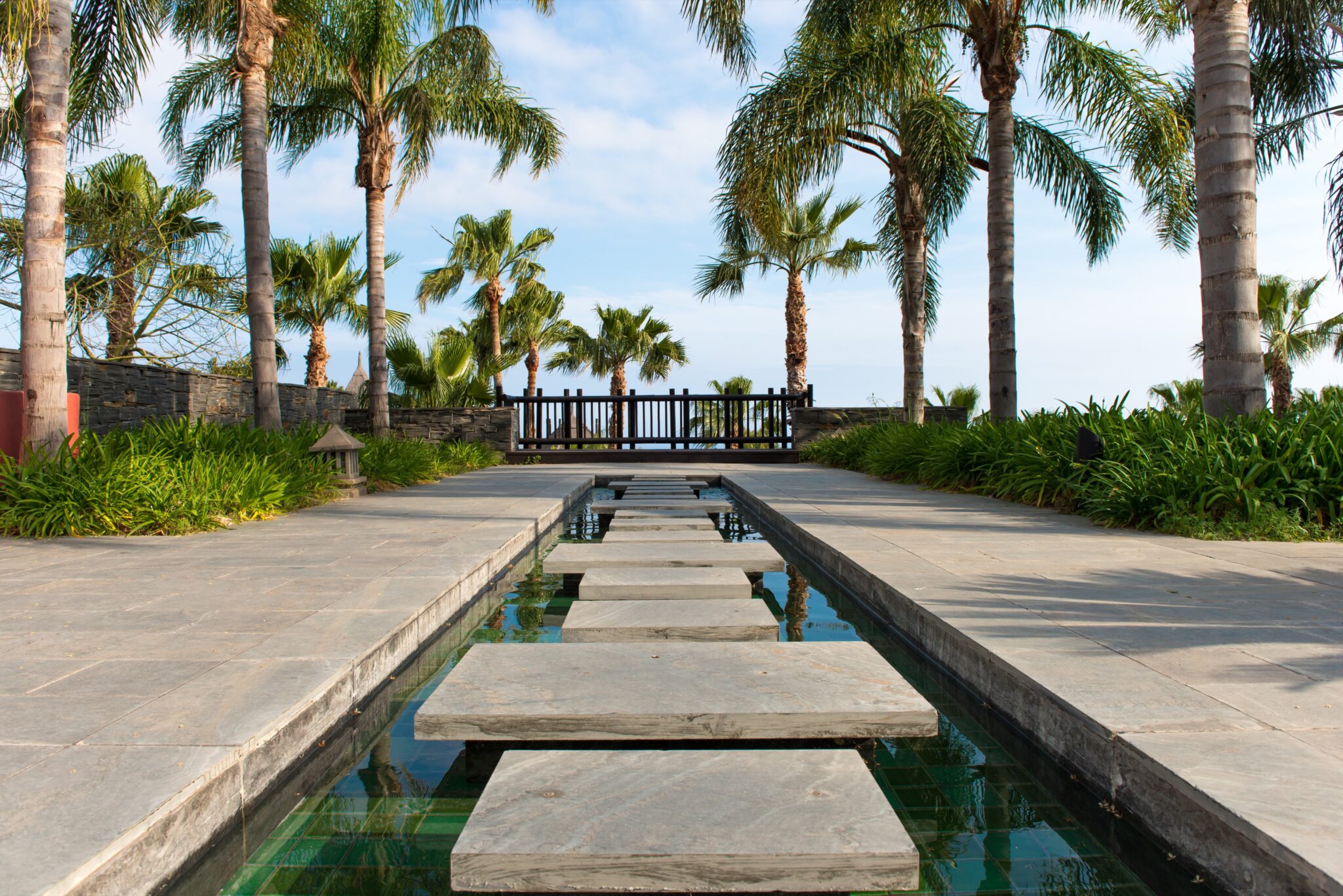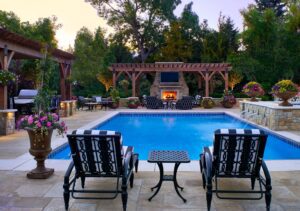Landscaping rocks are a versatile and durable addition to any outdoor space. Are you creating a pathway ? Decorating a garden bed, or enhancing drainage ? Knowing how much landscaping rock you need is essential for budgeting and ensuring a successful project.
In this guide, we’ll explore how to calculate the amount of rock required, factors that influence your needs, and tips for purchasing and installing landscaping rocks effectively.
Why Use Landscaping Rocks?
1. Enhancing Aesthetic Appeal
Landscaping rocks come in various shapes, sizes, and colors, making them an excellent choice for adding texture and visual interest to your outdoor spaces. They can complement plants, create focal points, or define pathways and borders.
For example, river rocks provide a natural look for garden beds, while crushed granite offers a modern aesthetic for patios or walkways. Choosing the right type of rock enhances the overall design of your landscape.
2. Improving Functionality
Beyond aesthetics, landscaping rocks serve practical purposes such as controlling erosion, improving drainage, and reducing weed growth. Rocks are low-maintenance and long-lasting, making them a cost-effective solution for many landscaping challenges.
For instance, pea gravel is ideal for playgrounds or dog runs due to its smooth texture, while lava rocks are lightweight and excellent for retaining moisture in garden beds.
Factors That Influence How Much Rock You Need
1. Project Type
The amount of rock required depends on the purpose of your project:
- Pathways and Walkways: Typically require a 2–3-inch depth of material for stability and coverage.
- Garden Beds: A 1–2-inch layer is sufficient for decorative purposes or weed control.
- Drainage Areas: May require deeper layers (4–6 inches) to ensure proper water flow.
In summary, adjust the depth of rock according to the intended use to ensure effectiveness and aesthetics in your project.
2. Area Size
In summary, adjust the depth of rock according to the intended use to ensure effectiveness and aesthetics in your project. Proper depth not only enhances stability and appearance but also promotes drainage and weed control, contributing to the longevity of your landscape.
3. Rock Size and Type
Different types of rocks have varying densities and coverage rates:
- smaller rocks like pea gravel or crushed stone pack more tightly and may require more material per square foot;
- larger rocks like river stones or boulders cover less area but add significant visual impact.
In summary, the choice of rock size and type not only affects the amount of material needed but also significantly impacts the overall aesthetics of your landscape design.
How to Calculate Landscaping Rock Needs
Step 1: Measure the Area
Start by measuring the length and width of the area where you plan to place the rocks. Multiply these numbers to calculate the total square footage (e.g., 10 feet x 20 feet = 200 square feet).
Step 2: Determine Desired Depth
Decide how deep you want the rock layer to be based on your project type:
- Decorative purposes: 1–2 inches.
- Pathways or patios: 2–3 inches.
- Drainage areas: 4–6 inches.
Convert the depth from inches to feet by dividing by 12 (e.g., 3 inches ÷ 12 = 0.25 feet).
Step 3: Use a Rock Coverage Formula
To estimate the amount of rock needed in cubic yards (the standard unit for bulk materials), use this formula:
$$
\text{Cubic Yards} = \frac{\text{Square Footage} \times \text{Depth (in feet)}}{27}
$$
For example:
A 200-square-foot area with a depth of 3 inches (0.25 feet):
$$
\frac{200 \times 0.25}{27} = 1.85 \text{ cubic yards}
$$
Step 4: Account for Extra Material
To ensure you have enough rock for your project, it’s advisable to purchase an extra 5–10% of material. This buffer accommodates settling, uneven surfaces, and potential mistakes during installation, helping you achieve a smooth and professional finish.
Average Costs of Landscaping Rocks
The cost of landscaping rocks varies depending on type, size, and supplier:
- Pea Gravel: $30–$50 per ton.
- River Rocks: $50–$150 per ton.
- Crushed Granite: $70–$100 per ton.
- Lava Rocks: $80–$200 per ton.
Delivery fees may apply if purchasing in bulk from local suppliers or online retailers.
Tips for Purchasing Landscaping Rocks
1. Buy in Bulk
For large projects, buying in bulk from local quarries or landscaping suppliers is more cost-effective than purchasing bags from retail stores. This approach is especially beneficial when sourcing materials for patios in Castle Rock, where quality and quantity can significantly enhance the overall design and durability of your outdoor spaces.
2. Match Rocks to Your Project
Choose rocks that suit your project’s purpose and aesthetic:
- smooth stones like river rocks are ideal for decorative areas;
- crushed stone works well for pathways or drainage solutions.
Choosing the right rocks tailored to your project’s purpose and aesthetic ensures a harmonious blend of beauty and functionality in your outdoor space.
3. Compare Suppliers
Shop around to compare prices and delivery options from multiple suppliers before making a purchase. Consider factors such as quality, customer reviews, and availability to ensure you choose the best supplier for your specific needs and budget.
If you have any questions or need personalized advice, contact us today to find out how we can help you with your project.
Installing Landscaping Rocks
1. Prepare the Area
Clear debris, weeds, and grass from the area where you’ll place the rocks. Level the surface using a rake or shovel to create a stable foundation. Additionally, consider laying down landscape fabric to prevent weed growth and improve drainage, ensuring your rock installation remains attractive and functional over time.
2. Lay Landscape Fabric
Install landscape fabric over the prepared area to prevent weed growth while allowing water drainage. Ensure the fabric overlaps at the seams to create a continuous barrier.
Secure it with landscape staples or pins to keep it in place, and consider adding a layer of mulch or gravel on top for added protection and aesthetics. This will enhance the longevity of your rock installation and maintain a neat appearance.
3. Spread the Rocks
Use a wheelbarrow to transport rocks to the site and spread them evenly with a rake or shovel until reaching your desired depth. Start by placing larger rocks first for stability, then fill in with smaller stones for a cohesive look.
Make sure to leave space between the rocks for drainage and to prevent water pooling. Regularly step back to assess the evenness of your spread, adjusting as necessary to achieve a uniform appearance that enhances your landscape design.
Frequently Asked Questions (FAQ)
1. How do I calculate how much landscaping rock I need?
Measure the area’s square footage, determine your desired depth in feet, and use this formula:
$$
\text{Cubic Yards} = \frac{\text{Square Footage} \times \text{Depth (in feet)}}{27}
$$
2. What is the best type of rock for drainage?
Crushed stone or pea gravel works best for drainage projects due to their ability to allow water flow while preventing erosion.
3. How much does landscaping rock cost?
Costs vary by type but typically range from $30–$200 per ton depending on size and material.
4. Can I install landscaping rocks myself?
Yes! With proper preparation and tools like shovels and wheelbarrows, installing landscaping rocks can be a DIY-friendly project.
5. Should I use landscape fabric under rocks?
Yes! Landscape fabric helps prevent weeds while allowing water drainage—extending the lifespan of your project.
6. How often should I replace landscaping rocks?
Most landscaping rocks are durable and last indefinitely with minimal maintenance unless they become discolored or displaced over time.
7. Where can I buy landscaping rocks?
Landscaping rocks are available at local quarries, garden centers, home improvement stores like Home Depot or Lowe’s, and online retailers offering bulk delivery options.
Landscaping rocks are a versatile addition that enhances both aesthetics and functionality—but calculating how much you need ensures efficiency without overspending! By following this guide carefully—you’ll achieve stunning results tailored perfectly toward transforming outdoor spaces alike!




